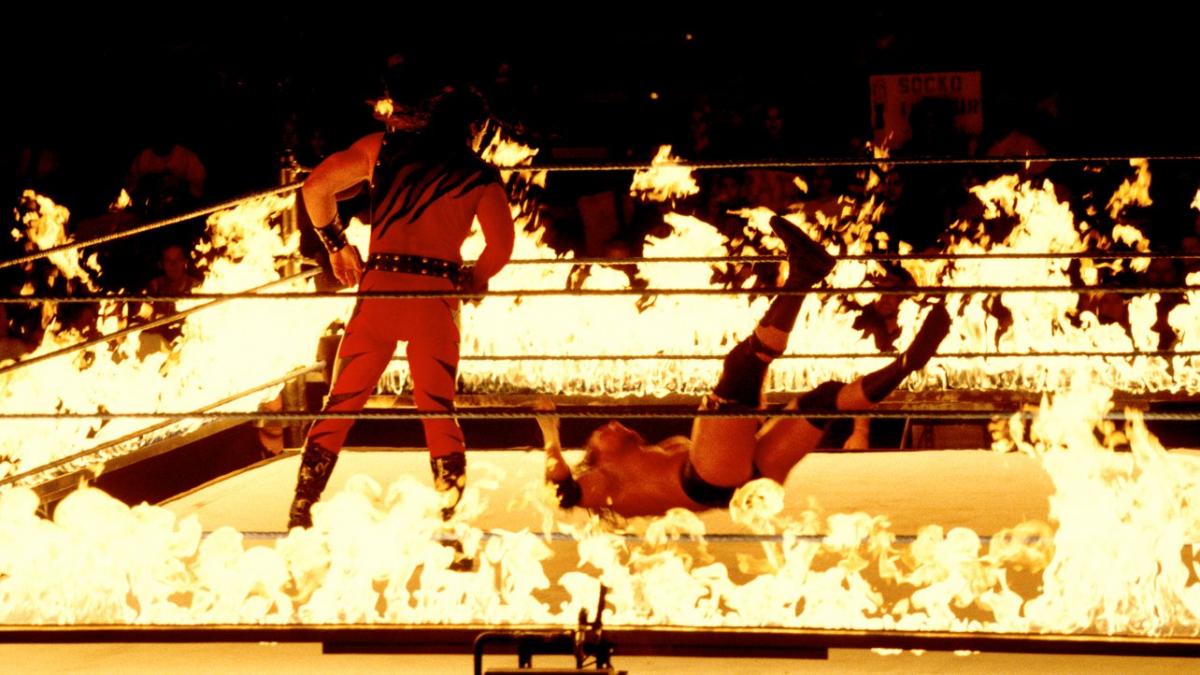
On a recent edition of his “Something To Wrestle With” podcast, WWE executive Bruce Prichard recalled having discussions of an exploding deathmatch at WrestleMania 16 and why it was quickly shot down.
You can check out some highlights from the podcast below:
On whether an exploding deathmatch was considered for WrestleMania 16: “No, it was never seriously considered. I think it was looked at as far as, ‘Okay, is there anything to this?’ And I think that once everybody saw it, it’s like, ‘We can’t do that!’ Certainly can’t do it indoors. But also, anybody that’s ever seen an exploding match, it’s — they’re terrible. They’re absolutely — the payoff is a big explosion. You know, we blow off more pyro for entrances than what was in an exploding deathmatch. And a whole bunch of dust and just, people can’t see. And then you have an anti-climatic finish.
“So you know when you look at it and try and analyze, sounds cool. ‘Oh my God, exploding deathmatch! Holy cow, the the chaos, oh my!’ They’re farts in church. I just — you know, once you build up in your mind what this is going to be and it doesn’t produce, it’s a bunch of concussions with a bunch of smoke. And then somebody lays on top of somebody.”
On the matches being unimpressive in his opinion: “So the the referee wears this whole outfit that is, the fireproof outfit. But the two guys working wear nothing. So the explosion happens, there’s no damage to the guys that were wearing nothing. But the guy that’s wearing the whole explosive thing is like passed out on the mat. It’s ridiculous. Again, when you you watch it I think that there’s that desire, our human desire to want to see it for the first time. And then you see it, you go ‘Oh. That wasn’t that great.’ So I’ve seen him on tape, seen them in person. And in person frankly was a bigger letdown than watching it on tape.”
On talking about it at all: “So I think that you know, looking at something to do. Because for Kane, that’s logical. like an Inferno match, an explosion match. You know, what’s the next evolution of that? But then after watching it and trying to figure out, ‘Okay, could we do something similar to this?’ The feedback was unanimous that, ‘Alright, once you get to the explosion, then what?’ It doesn’t pay off other than ‘Big Boom.’ And again as I say, the pyro and everything we do for entrances and things of that nature is more than the pyro would have been for for this. Yeah sure, we could done a huge explosion. But, then nobody’s affected by it? And the people that are sitting at ringside, doesn’t affect them at all? It’s all on the outside of the Ring. It’s closer to the fans than it is the the guys in the ring.
“So yes, it was discussed. We discussed it several times. I go back to whenever we went and worked the Onita match with Vader and Shamrock. That was the first time I saw it in person. And oh my God, it was built up to me. And there was one guy, Victor Quinones, was like, ‘Eh, watch it back here. It’s not much of a match. It’s not much of a — you know, I don’t know how they pay this gimmick off. It’s terrible.”
WWE Executive Bruce Prichard Discusses Exploding Deathmatch Consideration at WrestleMania 16
In a recent episode of his podcast “Something To Wrestle With,” WWE executive Bruce Prichard revealed that there were discussions about including an exploding deathmatch at WrestleMania 16. However, the idea was quickly dismissed due to various reasons.
Prichard explained that while the concept of an exploding deathmatch may sound exciting and chaotic, the reality is far from impressive. He mentioned that such matches are often underwhelming, with the payoff being a big explosion that pales in comparison to the pyrotechnics used for wrestler entrances. Additionally, the aftermath of the explosion usually results in a cloud of dust, hindering visibility and leading to an anticlimactic finish.
One of the major issues Prichard pointed out was the inconsistency in the protective gear worn by the participants. While the referee would be fully covered in a fireproof outfit, the wrestlers themselves would wear nothing. This discrepancy made the whole match appear illogical and unrealistic. The explosion would leave no damage on the wrestlers, but the referee, who was wearing the protective gear, would be left incapacitated on the mat.
Prichard further emphasized that witnessing an exploding deathmatch in person was even more disappointing than watching it on tape. The initial curiosity and anticipation quickly faded once the match unfolded, leaving spectators underwhelmed by the lackluster spectacle.
Despite discussing the possibility of incorporating an exploding deathmatch into WrestleMania 16, Prichard and his team ultimately decided against it. They realized that after the explosion, there would be no significant payoff or impact on the participants or the audience. The explosion would occur outside the ring, closer to the fans than to the wrestlers themselves, making it even less impactful.
Prichard’s skepticism about exploding deathmatches stemmed from his previous experience watching one between Vader and Ken Shamrock, which he found to be lackluster and poorly executed. This firsthand encounter solidified his belief that such matches were not worth pursuing.
In conclusion, while the idea of an exploding deathmatch may initially sound thrilling, Bruce Prichard’s insights shed light on the practical and creative challenges that come with executing such a match. Ultimately, the WWE decided against including it in WrestleMania 16 due to the underwhelming nature of the spectacle and the lack of a satisfying payoff.
